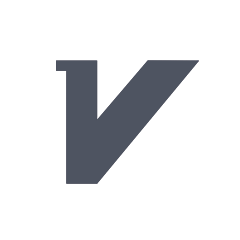研究发现热红外影响埃及伊蚊寻找宿主的行为
作者:小柯机器人 发布时间:2024/8/24 23:39:41
本期文章:《自然》:Online/在线发表
美国加州大学Craig Montell课题组近日取得一项新成果。他们发现热红外影响埃及伊蚊寻找宿主的行为。这一研究成果发表在2024年8月21日出版的国际学术期刊《自然》上。
研究人员确定了一种埃及伊蚊用来寻找人类的线索。研究证明埃及伊蚊能感知目标发出的红外辐射,并将这一信息与其它线索结合使用,进行高效的中距离导航。热红外线的探测需要热激活通道TRPA1,该通道在触角顶端的神经元中表达。
在这些神经元中,有两种蛋白与TRPA1共表达,它们能促进对较低红外强度的探测。研究提出,辐射能量会导致触角末端局部产热,从而激活热感神经元中的温度敏感受体。热红外辐射是一种有效的中程定向线索,这一认识拓展了人们对蚊子如何有效定位宿主的理解。
据了解,每年由蚊子传播的疾病会影响数亿人,对发展中国家的影响尤为严重。埃及伊蚊是登革热、黄热病和寨卡病毒的主要传播媒介。埃及伊蚊雌蚊叮咬人类需要整合多种线索,包括呼吸产生的二氧化碳、皮肤产生的有机气味和视觉线索,这些都是在中远距离感知到的线索,其他线索则是在非常近的距离被感知。
附:英文原文
Title: Thermal infrared directs host-seeking behaviour in Aedes aegypti mosquitoes
Author: Chandel, Avinash, DeBeaubien, Nicolas A., Ganguly, Anindya, Meyerhof, Geoff T., Krumholz, Andreas A., Liu, Jiangqu, Salgado, Vincent L., Montell, Craig
Issue&Volume: 2024-08-21
Abstract: Mosquito-borne diseases affect hundreds of millions of people annually and disproportionately impact the developing world1,2. One mosquito species, Aedes aegypti, is a primary vector of viruses that cause dengue, yellow fever and Zika. The attraction of Ae. aegypti female mosquitos to humans requires integrating multiple cues, including CO2 from breath, organic odours from skin and visual cues, all sensed at mid and long ranges, and other cues sensed at very close range3,4,5,6. Here we identify a cue that Ae. aegypti use as part of their sensory arsenal to find humans. We demonstrate that Ae. aegypti sense the infrared (IR) radiation emanating from their targets and use this information in combination with other cues for highly effective mid-range navigation. Detection of thermal IR requires the heat-activated channel TRPA1, which is expressed in neurons at the tip of the antenna. Two opsins are co-expressed with TRPA1 in these neurons and promote the detection of lower IR intensities. We propose that radiant energy causes local heating at the end of the antenna, thereby activating temperature-sensitive receptors in thermosensory neurons. The realization that thermal IR radiation is an outstanding mid-range directional cue expands our understanding as to how mosquitoes are exquisitely effective in locating hosts.
DOI: 10.1038/s41586-024-07848-5
Source: https://www.nature.com/articles/s41586-024-07848-5
期刊信息
Nature:《自然》,创刊于1869年。隶属于施普林格·自然出版集团,最新IF:69.504
官方网址:http://www.nature.com/
投稿链接:http://www.nature.com/authors/submit_manuscript.html





